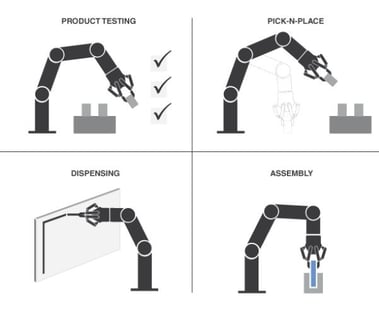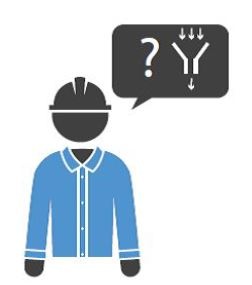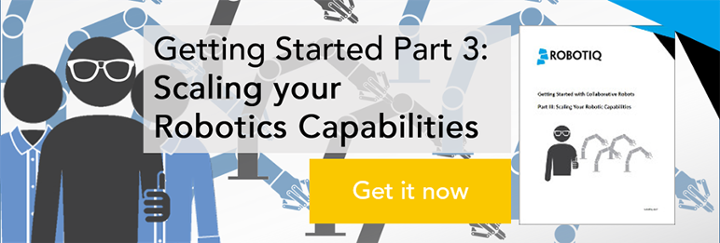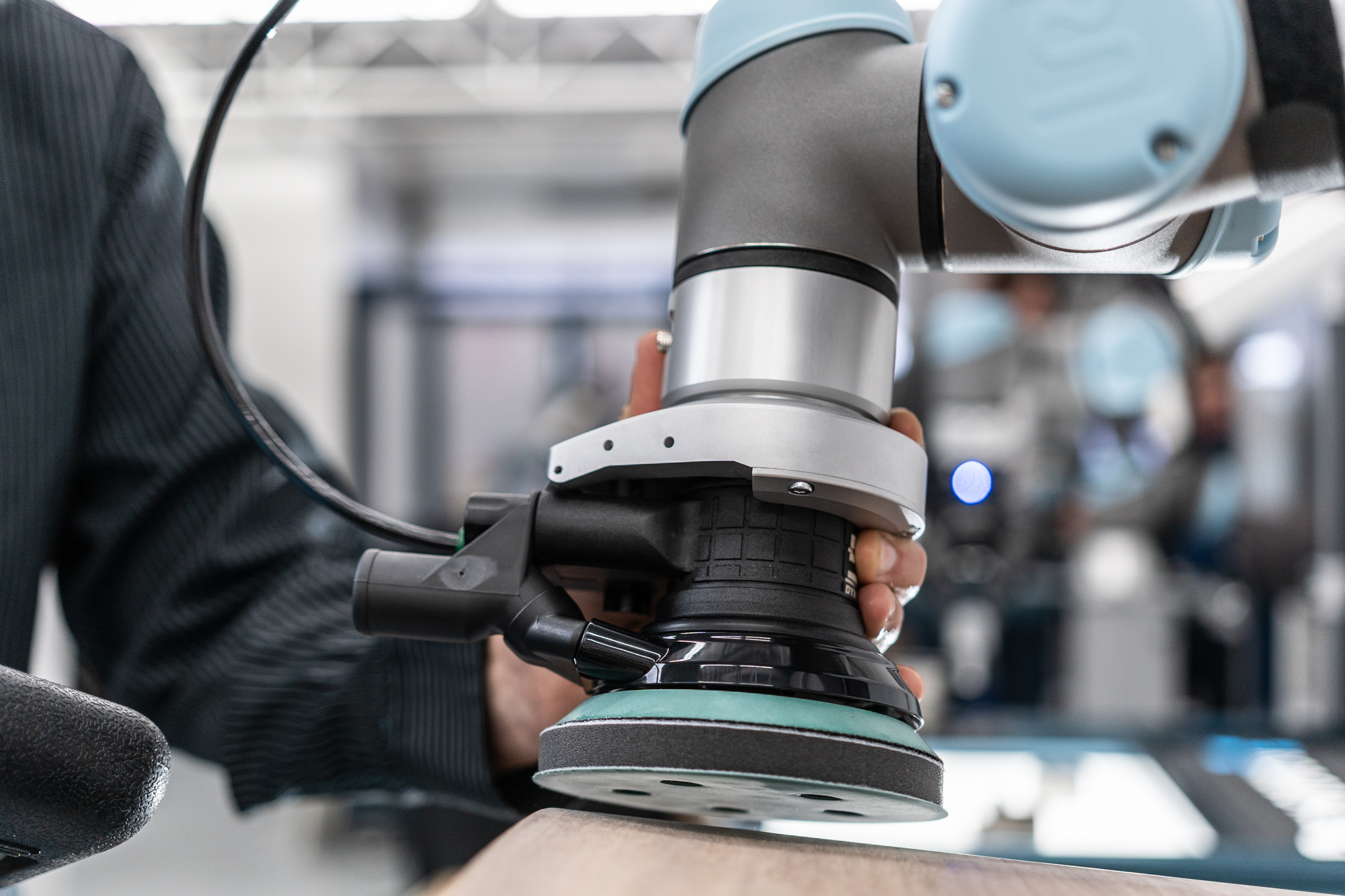Scaling Up from 1 to 10 Robots: Gather Information

Posted on Sep 22, 2016 7:00 AM. 4 min read time
After implementing the first collaborative robot on your shop floor, you have probably already seen its benefits. As your production keeps increasing you may be toying with the idea of where else in your production process you could add robots to capture more of the benefits of automation. Well, here are a few ideas from our customers' experience to help you on the road to 10, 20 or even more new robots.
 Your second, third and subsequent robotic cells will depend on the nature of your manufacturing process. Consequently, you will nee to see if you are doing a copy-paste of your existing robotic cell(s) or if you need to seek new applications to automate.
Your second, third and subsequent robotic cells will depend on the nature of your manufacturing process. Consequently, you will nee to see if you are doing a copy-paste of your existing robotic cell(s) or if you need to seek new applications to automate.
The first step before scaling your operation is to gather the most information you can on your future production forecast. In fact, most of the time a new machine or robot is brought to production when a production peak is anticipated. Perhaps, it is important to consider and to calculate the effects of these peaks on your production. Is this just a one-shot deal or it is a repetitive occurrence?
What Was the Result/ROI of Your First Robotic Cell?
Robots are still a huge investment for companies. It is sometimes hard to determine if increasing your robot park will be worth it. To make sure it is a wise investment start by calculating your ROI on your first robotic cell and see if the same kind of ROI can be expected with your next cell.
Also, you should consider other benefits of automation which don’t show up on the bottom line as rapidly as ROI, like employee satisfaction and reduced sick days from the lack of ergonomic injuries. These too will ultimately affect the bottom line of your business, but are not as easy to calculate.
What Did You Learn from Your First Integration?
When doing your first integration your team was probably in front of a complex machine the running of which has now become commonplace and normalized. Well, you should know that you succeeded in passing through a steep learning curve in your integration process. This knowledge will be very useful when you are implementing your next robotic cell. In fact, if you thought that something wasn’t working as smoothly as you would have liked in your first cell, this is the perfect opportunity to look for something a little different to make your life easier the second time around. This is precisely where you can make your robotic integration knowledge work for you and where you can build on this knowledge for future projects.
You may even want to take a second look at the eBook Getting Started with Collaborative Robots to refresh your memory on how to do a first collaborative robot integration before starting the process again.
What Does the Sales Forecast Look Like?
A good way to establish how much to invest in your robot park is to try to project your sale forecast based on information relevant to your industry and your present and prospective customers. Your robot cell choice will be different if the production run you are looking to automate spikes only once every 6 months or if you estimate that it is more likely to increase steadily over the next 4 years.
Where Are Your Bottlenecks?
Solving bottlenecks is essential to a company’s growth and is usually experienced as a production enhancement. It is always a good thing if a robotic application can solve a production problem. To get the maximum out of your robotic integration you need to ask yourself 3 essential questions:
thing if a robotic application can solve a production problem. To get the maximum out of your robotic integration you need to ask yourself 3 essential questions:
- Where are your bottlenecks?
Identify them by simply asking if the following manufacturing process is waiting for this production operation.
- Which one is the most important?
Some bottleneck detection techniques use ratings to measure which workstation or machine is slowing down the production process.
- Is it possible to solve this bottleneck with robotics?
Now you may have identified a lot of different bottlenecks in your production process (good for you!), however, only a handful of them can be solved with robotics. Make sure to take a look at “What is Easy and What is Hard to Automate” in order to make a wise choice for your next application.
Stay tuned for our a subsequent article about the second step after gathering all the information, which is creating your automation plan.









Leave a comment